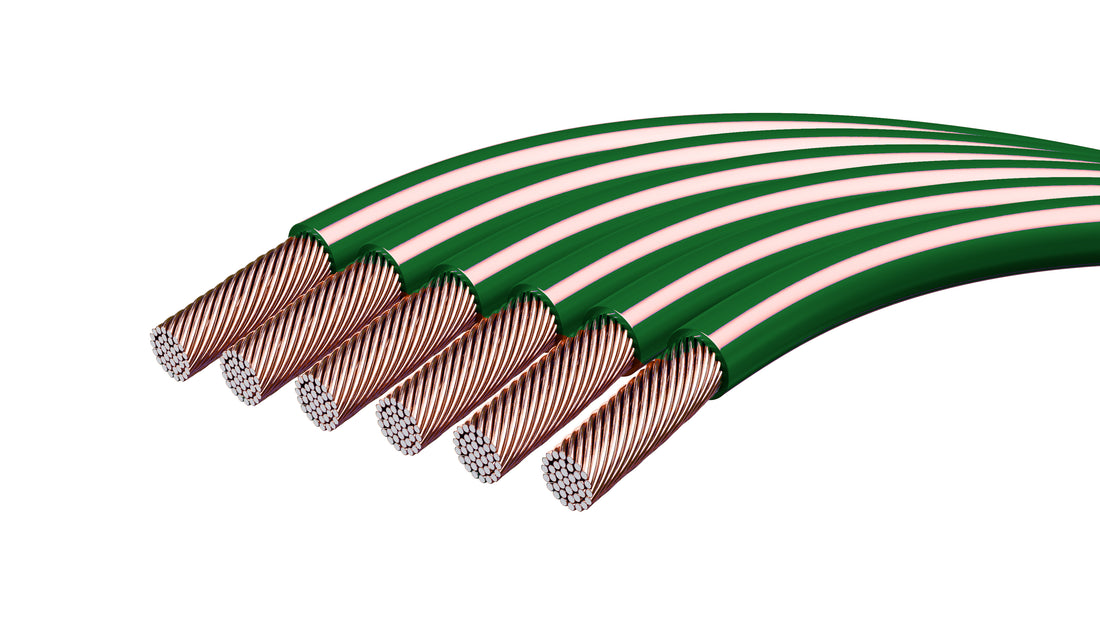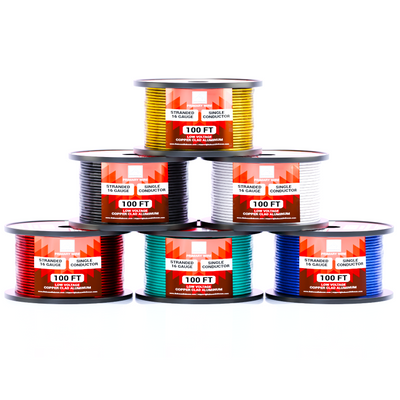
What Does the Green Wire Mean? A Guide to Green Wire
Share
Introduction
In the world of electrical wiring, the colors of wires hold significant meanings and play a crucial role in ensuring safety and efficiency. Amongst the array of wire colors, the green wire stands out as a symbol of grounding and protection. Whether you are a DIY enthusiast or simply curious about the electrical systems in your home, understanding the significance of the green wire is essential. In this guide, we will delve into everything you need to know about the green wire, its purpose, and how it contributes to a safe and functional electrical setup. So, let's unravel the mysteries surrounding the green wire and gain valuable insights into its importance in electrical installations.
Don't forget to look at our other articles:
- What Does The Red Wire Mean?
- What Does The Blue Wire Mean?
- What Does The Black Wire Mean?
- What Does The Yellow Wire Mean?
- What Does The White Wire Mean?
Understanding the Purpose of the Green Wire
The green wire is typically utilized as a grounding wire in electrical systems, playing a crucial role in safety by helping prevent electrical shock and equipment damage. In residential wiring, this wire connects to the ground bus bar in the electrical panel, ensuring a secure pathway for stray electricity. Proper grounding with the green wire guarantees that any unintended electrical currents are safely directed into the ground, thereby minimizing the risk of accidents and malfunctions. Understanding the purpose of the green wire is essential for maintaining a safe and efficient electrical environment.

Common Uses of the Green Wire in Home Wiring
Commonly found as a grounding wire, the green wire plays an indispensable role in home electrical systems. Its primary function is to provide a secure path for electricity to follow in the event of a short circuit. By redirecting excess electricity safely into the ground, green wires significantly reduce the risk of electrical shocks. This redirection not only protects individuals but also preserves the integrity of electrical installations. Essential for ensuring both safety and functionality, the green wire is a critical component in maintaining a secure home environment. Without it, the potential for dangerous accidents and equipment malfunctions would drastically increase.

Why Is the Green Wire Important in Electrical Systems?
In electrical systems, the green wire holds paramount importance as it functions as the grounding wire, offering a secure route for stray electricity to return to the ground during a fault. This critical role helps avert electrical shocks and fires by ensuring that any exposed metal components remain non-electrified. Moreover, the green wire is indispensable for preserving the safety and integrity of an electrical circuit, safeguarding both equipment and individuals from potential hazards. Compliance with electrical codes and standards mandates proper grounding with the green wire, ensuring that residential, commercial, and industrial installations meet stringent safety requirements. This adherence not only enhances protection but also fosters confidence in the reliability of electrical systems.

How do I Identify and Handle Green Wires Correctly?
Green wires are typically designated for grounding in electrical systems, and using them for any other purpose can compromise safety. Before handling green wires, it is crucial to turn off the power at the circuit breaker to mitigate the risk of electric shock. Additionally, employing a voltage tester to verify that the green wire is not carrying any current is a vital precautionary step. Properly connecting green wires to grounding terminals or grounding bars ensures the overall safety and functionality of the electrical system. Adhering to these practices helps maintain a secure and efficient electrical environment.

Safety Tips for Working with the Green Wire
Prior to handling the green wire, always turn off the power supply to prevent electric shock.
Utilizing insulated tools
Insulated tools can further minimize the risk of accidental contact with live wires. Ensuring the green wire is properly connected to the grounding system is crucial for maintaining safety in electrical installations.
Wearing protective gear
Additionally, wearing protective gear, such as gloves and safety glasses, provides an extra layer of protection when working with electrical wiring. By adhering to these safety measures, you can significantly reduce the risk of accidents and ensure a secure working environment.
Conclusion
In conclusion, the green wire serves as a vital component in electrical systems, primarily functioning as a grounding wire to ensure safety and prevent potential hazards like electrical shocks and fires. Its importance cannot be overstated, as it provides a secure path for stray electricity, thus protecting both individuals and electrical equipment. Proper identification and handling of green wires are crucial practices, as misusing this wire can compromise the safety of the entire electrical system. By adhering to safety tips and ensuring the green wire is correctly connected to grounding terminals, you can maintain a secure and efficient electrical environment. Understanding the role and proper management of the green wire not only complies with electrical codes and standards but also fosters confidence in the reliability and safety of your electrical installations.








